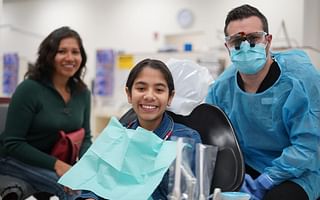🚀 Your Journey to Becoming a Periodontist: Step-by-Step Guide 📚
Embarking on a journey to become a periodontist is a rewarding but challenging endeavor. This specialized field of dentistry requires a deep commitment to education and continuous learning. Our step-by-step guide above provides a clear roadmap to help you navigate this path. Let's delve deeper into what each step entails and how you can make the most of your journey.
Step 1: Obtaining a Bachelor's Degree
Before you can apply to dental school, you need to earn a Bachelor's degree. While there's no specific requirement for the major, courses in biology, chemistry, and physics are often beneficial. To better understand what to expect in dental school, check out our Essential Guide to Dental School.
Step 2: Passing the Dental Admission Test (DAT)
The DAT is a crucial step in your journey. This test assesses your academic capacity and scientific knowledge. For tips on how to prepare and succeed in your licensure journey, visit our guide on Navigating Dental Board Exams.
Step 3: Earning a DDS or DMD Degree
Enrolling in a dental school to earn a Doctor of Dental Surgery (DDS) or Doctor of Dental Medicine (DMD) degree is the next step. This typically takes four years. For a smooth transition from dental school to practice, read our article on Transitioning from Dental School to Practice.
Step 4: Completing a Residency in Periodontics
After dental school, you'll need to complete a three-year residency program in periodontics. This program provides specialized training in diagnosing and treating periodontal diseases. To understand more about the different career paths in dentistry, explore our article on Career Growth in Dentistry.
Step 5: Becoming Board Certified
While not mandatory, becoming board certified can enhance your job prospects. You can achieve this by passing an exam from the American Board of Periodontology. Remember, every step you take brings you closer to your goal of becoming a periodontist.
At Dentistry Guidelines, we're here to support you every step of the way. Whether you're just starting your journey or looking to advance your career, our resources are designed to provide the guidance you need. Remember, the path to becoming a periodontist is a marathon, not a sprint. Stay focused, stay motivated, and you'll reach your destination.
















